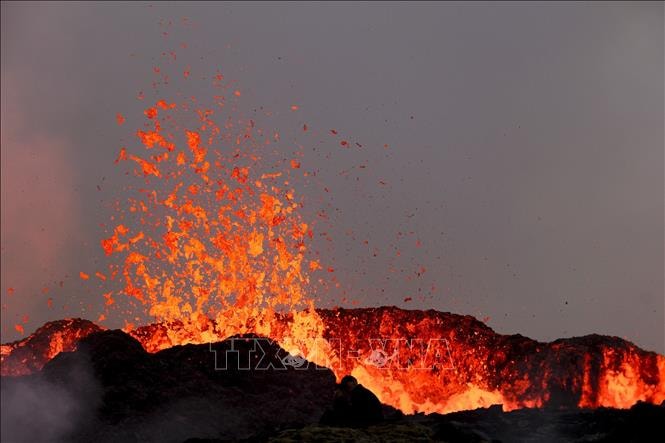Icelandic authorities on November 10 declared a state of emergency over the risk of a volcanic eruption after a series of strong earthquakes shook the Reykjanes Peninsula in the southwest of the country.

“The National Police Chief has declared a state of emergency for civil defense due to a strong earthquake in Sundhnjukagigar, north of Grindavik. Further earthquakes could be stronger than the ones that have just occurred and this chain of events could lead to an eruption,” the Icelandic Department of Civil Protection and Emergency Management said in a statement, as experts said the quake could be a precursor to an eruption.
The Icelandic Meteorological Office (IMO) predicts a volcanic eruption could take place "in the next few days" in the country.
Grindavik, a town of about 4,000 people, is located about 3 km southwest of the area where the earthquake occurred on November 10. Grindavik authorities are planning for local evacuations in case of an eruption.
According to IMO, on November 10, two strong earthquakes shook Grindavik, with the strongest earthquake measuring 5.2 magnitude occurring north of the town.
The quakes were felt in the capital Reykjavik, about 40 km away, and along Iceland's southern coast, shaking windows and furniture.
Police were forced to close a north-south road to Grindavik due to severe damage in the area following the November 10 earthquake.
IMO data shows that about 24,000 earthquakes have occurred in the Reykjanes Peninsula since the end of last month, including about 800 recorded on November 10.
The IMO also noted the accumulation of magma underground at a depth of about 5 km. If this magma moves towards the surface, this could lead to a volcanic eruption. "It would take several days for the magma to reach the surface. If a fissure were to appear where seismic activity is currently at its highest, lava would flow to the southeast and west, but not towards Grindavik," the IMO said.
The Icelandic Department of Civil Protection and Emergency Management said it had sent the patrol ship Thor to Grindavik “for security purposes”. Emergency shelters and help centres will open in Grindavik next week, as well as three other locations in southern Iceland, to provide information and support to people on the move.
On November 9, Blue Lagoon - a tourist destination near Grindavik, famous for its geothermal spas and luxury hotels, also announced its temporary closure as a precaution.
Meanwhile, the Svartsengi geothermal plant - the main supplier of electricity and water to 30,000 residents on the Reykjanes peninsula - has also drawn up contingency plans to protect the plant and workers in the event of a volcanic eruption.
Situated between the rapidly moving tectonic plates of Eurasia and North America, Iceland is a hotspot for seismic and volcanic activity in the world. The country is home to 33 active volcanic systems – the most of any European country.
Since 2021, the Reykjanes Peninsula has seen three volcanic eruptions, in March 2021, August 2022, and July 2023. All three eruptions were located far from infrastructure or populated areas. Before that, the Reykjanes volcano system had been "dormant" for 80 years.
Volcanologists predict that this cycle of activity at the Reykjanes volcano system could last for decades or centuries.
According to VNA